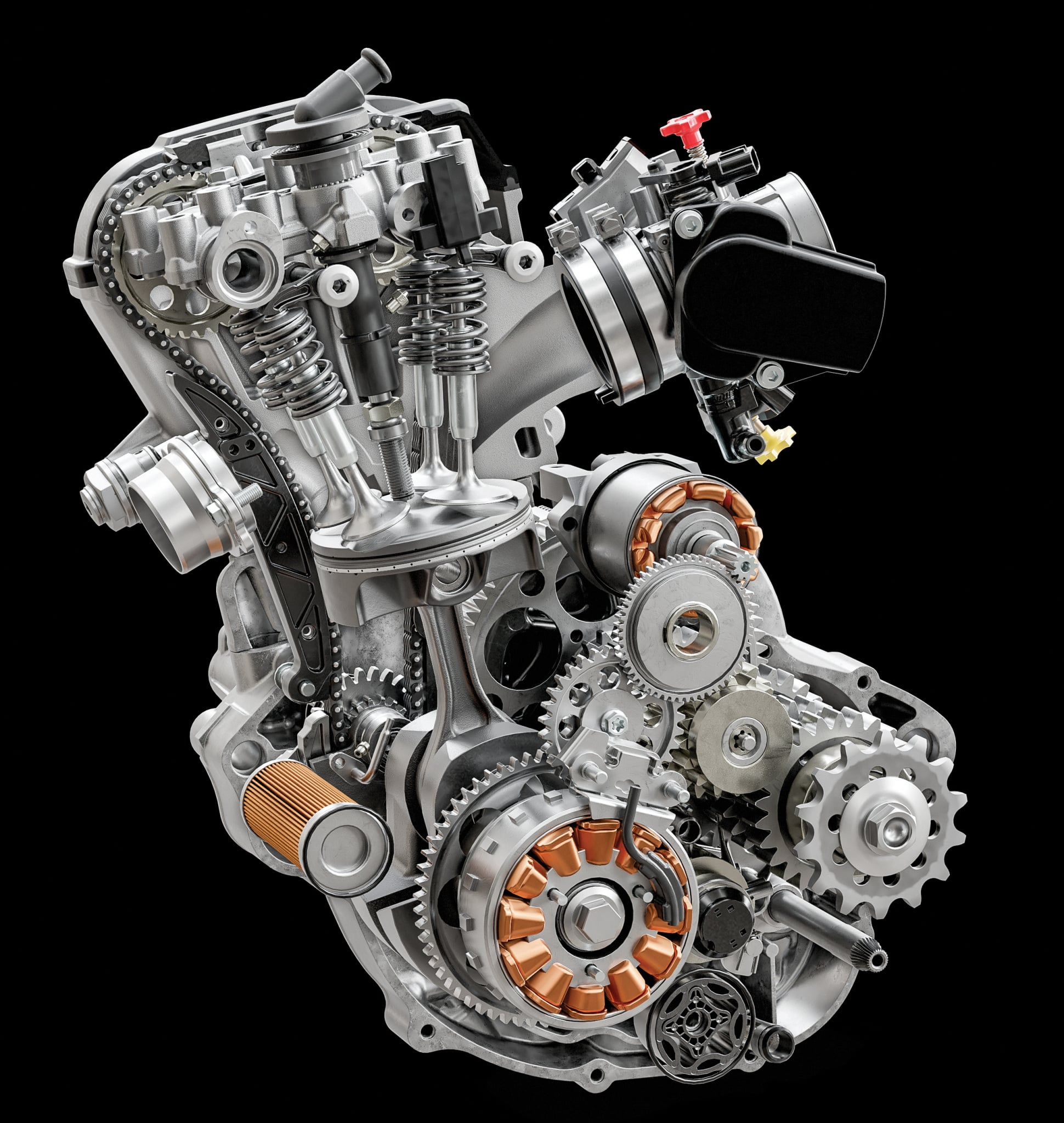ASK THE MXPERTS: WHAT IS A DESAXE ENGINE?
 Modern 450 cranks are offset 0mm, 4.5mm, 5mm. 8.5mm and 12mm depending on brand.
Modern 450 cranks are offset 0mm, 4.5mm, 5mm. 8.5mm and 12mm depending on brand.
Dear MXperts,
I learn new stuff every time I read an issue of MXA. Is it true that the piston, wrist pin, crankshaft and cylinder bore do not line up vertically on modern four-stroke engines? That is contrary to what I learned in auto shop at school. True or false?
It is true. Engines with the cranks offset from the cylinder’s center line are called “desaxe” engines. Desaxe, the French word for “unbalanced,” describes an engine in which the cylinder is positioned with its exact center (the bore axis) offset from the center line of the crankshaft. Desaxe engines have been around for a long time, even Henry Ford implemented offset cranks on the Ford Flathead V8 in the 1930s. Motocross engines have been adopting offset cranks for the last 15 years.
Ultimately, the object of a desaxe engine is to produce more power with less friction. Since the compression stroke occurs on one side of the crank’s rotation and the power stroke on the other, offsetting the crankshaft to one side makes it possible to achieve both a loss of friction on the up stroke and a power advantage on the down stroke. When the crank is offset, the piston’s down force is directed in a straighter line from the piston through the connecting rod to the crankshaft. Instead of pushing the rod at an extreme angle, the rod’s relationship to the crank is less severe, thus more efficient on the power stroke.
As a rule of thumb, less crank offset affects higher rpm ranges, while more offset has its greatest effect at lower rpm. Thus, when Yamaha chose a 12mm offset for the YZ450F engine, they were using test rider input and computer modeling to get the type of power they wanted. It should be noted that there is a point of no return. Yamaha chose 12mm, but that does not mean that 15mm would be even better. In fact, the Suzuki RM-Z450 uses 0mm crank offset, and the Honda CRF450 has 4.5mm of offset. The Kawasaki has 8.5mm of offset, and the three Austrian engines share 5mm of offset.
In a conventional four-stroke engine, each of the strokes (intake, compression, power, exhaust) involves a nominal rotation of 180 degrees, totaling 720 degrees for the complete four-stroke combustion cycle. A desaxe engine adds to the duration of the two downward strokes (intake and power) and subtracts the same amount from the two upward strokes (compression and exhaust), with the total remaining at 720 degrees. A typical desaxe engine will have strokes of 185, 175, 185 and 175 degrees, with the degrees as a percentage of offset distance to stroke length.
How are cranks offset? It can be as simple as having the crank aligned with the center line of the cylinder and offsetting the piston with an eccentric wrist pin. In 2009, Yamaha wanted the benefits of offset cranks for the YZ450F but didn’t want the cost of new cases. So, Yamaha used a 1mm-offset piston wrist pin to move the centerline over 1mm; however, you can’t get 8mm, 10mm or 12mm of movement from an offset wrist pin. That necessitates a more complex solution, often requiring casting offset engine cases.





Comments are closed.